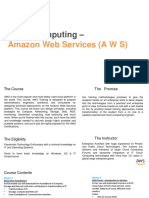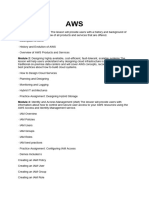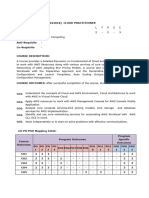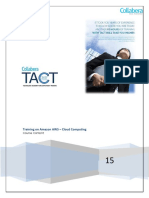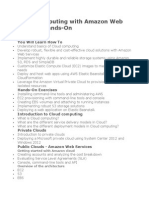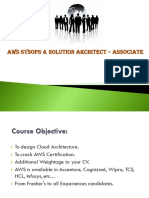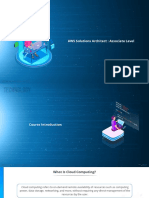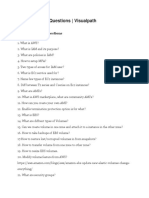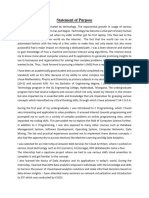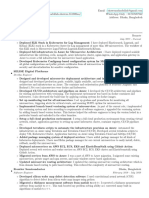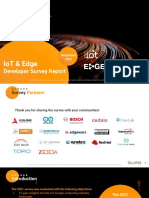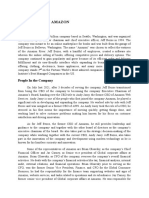0% found this document useful (0 votes)
33 views11 pages6 To 8 Pmclass
The AWS Solution Architect curriculum is designed for students and professionals to upskill in cloud computing, focusing on producing associate-level practitioners who can design scalable systems on AWS. The course includes 40 hours of instruction covering various modules related to AWS services, architecture, and best practices, with a strong emphasis on practical learning. Upon completion, participants will receive a certification and be prepared for the AWS Certified Solutions Architect - Associate exam.
Uploaded by
BlueBrainCopyright
© © All Rights Reserved
We take content rights seriously. If you suspect this is your content, claim it here.
Available Formats
Download as DOCX, PDF, TXT or read online on Scribd
0% found this document useful (0 votes)
33 views11 pages6 To 8 Pmclass
The AWS Solution Architect curriculum is designed for students and professionals to upskill in cloud computing, focusing on producing associate-level practitioners who can design scalable systems on AWS. The course includes 40 hours of instruction covering various modules related to AWS services, architecture, and best practices, with a strong emphasis on practical learning. Upon completion, participants will receive a certification and be prepared for the AWS Certified Solutions Architect - Associate exam.
Uploaded by
BlueBrainCopyright
© © All Rights Reserved
We take content rights seriously. If you suspect this is your content, claim it here.
Available Formats
Download as DOCX, PDF, TXT or read online on Scribd
/ 11



